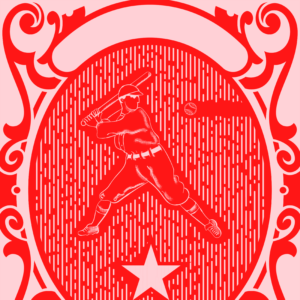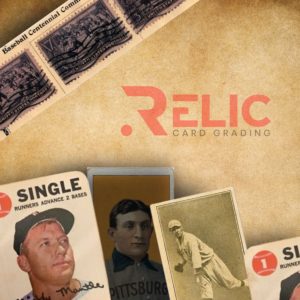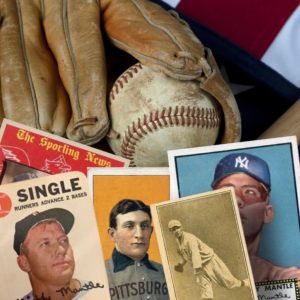
Category: Blog

Baseball Cards in the Post-War Era – Enter the 1950s
- Post author By Relic Card Grading
- Post date August 22, 2023
- No Comments on Baseball Cards in the Post-War Era – Enter the 1950s


Post-War Era Baseball Cards & The Introduction of Topps
The post-war era, particularly the 1950s, was a transformative period for America, marked by renewed optimism and rapid growth. For the world of baseball cards, this decade represented a renaissance of sorts, redefining the hobby for generations to come. The 1950s, or the post-war era of baseball cards, changed the way baseball cards were produced, viewed, and collected.
Topps Emerges as the Gold Standard in Baseball Cards
When modern-day collectors and hobbyists think of baseball cards, one name instantly comes to mind – Topps (affiliate link). But have you ever wondered about the origins of this iconic brand and how the brand evolved over time?
Believe it or not, Topps didn’t start out as a baseball card company. Established in 1938, The Topps Company, Inc. began its journey as a family gum enterprise. Yes, you read that right! Before they became synonymous with baseball memorabilia, Topps was busy producing Bazooka bubble gum.
It wasn’t until 1951 that Topps ventured into baseball cards. Their inaugural sets were quaintly named “Blue Backs” and “Red Backs” based on the color schemes on the back of the cards.
But the real game-changer came in 1952. That year, Topps released a set that would forever be etched in the annals of baseball card history. This set featured a young Mickey Mantle, a card that remains a Holy Grail for collectors today. Besides its memorable roster of players, the 1952 Topps set is also celebrated for standardizing the dimensions of the modern sports card – a size of 2.5 by 3.5 inches, which is still in use. The 1952 Topps baseball card checklist can be found below.
From its inception as a humble gum producer to its esteemed status as a trading card behemoth, Topps has been a game-changer. Over the decades, they’ve given us treasured baseball cards and expanded their repertoire, capturing the magic of various sports and entertainment phenomena.
So, the next time you hold a Topps card, remember, you’re not just holding a card, but a slice of history.
1952 Topps Baseball Card Checklist Cards
1 Andy Pafko
2 James E. Runnels
3 Hank Thompson
4 Don Lenhardt
5 Larry Jansen
6 Joe Hatten
7 Wayne Terwilliger
8 Fred Marsh
9 Bobby Hogue
10 Al Rosen
11 Phil Rizzuto
12 Monty Basgall
13 Johnny Wyrostek
14 Bob Elliott
15 Johnny Pesky
16 Gene Hermanski
17 Jim Hegan
18 Merrilll Combs
19 Johnny Bucha
20 Billy Loes
21 Ferris Fain
22 Dom DiMaggio
23 Billy Goodman
24 Luke Easter
25 Johnny Groth
26 Monte Irvin
27 Sam Jethroe
28 Jerry Priddy
29 Ted Kluszewski
30 Mel Parnell
31 Gus Zernial
32 Eddie Robinson
33 Warren Spahn
34 Elmer Valo
35 Hank Sauer
36 Gil Hodges
37 Duke Snider
38 Wally Westlake
39 Dizzy Trout
40 Irv Noren
41 Bob Wellman
42 Lou Kretlow
43 Ray Scarborough
44 Con Dempsey
45 Eddie Joost
46 Gordon Goldsberry
47 Willie Jones
48 Joe Page
49 Johnny Sain
50 Marv Rickert
51 Jim Russell
52 Don Mueller
53 Chris Van Cuyk
54 Leo Kiely
55 Ray Boone
56 Tommy Glaviano
57 Ed Lopat
58 Bob Mahoney
59 Robin Roberts
60 Sid Hudson
61 Tookie Gilbert
62 Chuck Stobbs
63 Howie Pollet
64 Roy Sievers
65 Enos Slaughter
66 Preacher Roe
67 Allie Reynolds
68 Cliff Chambers
69 Virgil Stallcup
70 Al Zarilla
71 Tom Upton
72 Karl Olson
73 William Werle
74 Andy Hansen
75 Wes Westrum
76 Eddie Stanky
77 Bob Kennedy
78 Ellis Kinder
79 Gerald Staley
80 Herm Wehmeier
81 Vernon Law
82 Duane Pillette
83 Billy Johnson
84 Vern Stephens
85 Bob Kuzava
86 Ted Gray
87 Dale Coogan
88 Bob Feller
89 Johnny Lipon
90 Mickey Grasso
91 Red Schoendienst
92 Dale Mitchell
93 Al Sima
94 Sam Mele
95 Ken Holcombe
96 Willard Marshall
97 Earl Torgeson
98 Bill Pierce
99 Gene Woodling
100 Del Rice
101 Max Lanier
102 Bill Kennedy
103 Cliff Mapes
104 Don Kolloway
105 John Pramesa
106 Mickey Vernon
107 Connie Ryan
108 Jim Konstanty
109 Ted Wilks
110 Dutch Leonard
111 Harry Lowrey
112 Henry Majeski
113 Dick Sisler
114 Willard Ramsdell
115 George Munger
116 Carl Scheib
117 Sherman Lollar
118 Ken Raffensberger
119 Maurice McDermott
120 Bob Chakales
121 Gus Niarhos
122 Jack Jensen
123 Eddie Yost
124 Monte Kennedy
125 Bill Rigney
126 Fred Hutchinson
127 Paul Minner
128 Don Bollweg
129 Johnny Mize
130 Sheldon Jones
131 Morrie Martin
132 Clyde Kluttz
133 Al Widmar
134 Joe Tipton
135 Dixie Howell
136 Johnny Schmitz
137 Roy McMillan
138 Bill MacDonald
139 Ken Wood
140 Johnny Antonelli
141 Clint Hartung
142 Harry Perkowski
143 Les Moss
144 Ed Blake
145 Joe Haynes
146 Frank House
147 Bob Young
148 Johnny Klippstein
149 Dick Kryhoski
150 Ted Beard
151 Wally Post
152 Al Evans
153 Bob Rush
154 Joe Muir
155 Frank Overmire
156 Frank Hiller
157 Bob Usher
158 Eddie Waitkus
159 Saul Rogovin
160 Owen Friend
161 Bud Byerly
162 Del Crandall
163 Stan Rojek
164 Walt Dubiel
165 Eddie Kazak
166 Paul LaPalme
167 Bill Howerton
168 Charlie Silvera
169 Howie Judson
170 Gus Bell
171 Ed Erautt
172 Eddie Miksis
173 Roy Smalley
174 Clarence Marshall
175 Billy Martin
176 Hank Edwards
177 Bill Wight
178 Cass Michaels
179 Frank Smith
180 Charley Maxwell
181 Bob Swift
182 Billy Hitchcock
183 Erv Dusak
184 Bob Ramazzotti
185 Bill Nicholson
186 Walt Masterson
187 Bob Miller
188 Clarence Podbielan
189 Pete Reiser
190 Don Johnson
191 Yogi Berra
192 Myron Ginsberg
193 Harry Simpson
194 Joe Hatten
195 Orestes Minoso
196 Solly Hemus
197 George Strickland
198 Phil Haugstad
199 George Zuverink
200 Ralph Houk
201 Alex Kellner
202 Joe Collins
203 Curt Simmons
204 Ron Northey
205 Clyde King
206 Joe Ostrowski
207 Mickey Harris
208 Marlin Stuart
209 Howie Fox
210 Dick Fowler
211 Ray Coleman
212 Ned Garver
213 Nippy Jones
214 Johnny Hopp
215 Hank Bauer
216 Richie Ashburn
217 George Stirnweiss
218 Clyde McCullough
219 Bobby Shantz
220 Joe Presko
221 Granny Hamner
222 Hoot Evers
223 Del Ennis
224 Bruce Edwards
225 Frank Baumholtz
226 Dave Philley
227 Joe Garagiola
228 Al Brazle
229 Gene Bearden
230 Matt Batts
231 Sam Zoldak
232 Billy Cox
233 Bob Friend
234 Steve Souchock
235 Walt Dropo
236 Ed Fitz Gerald
237 Jerry Coleman
238 Art Houtteman
239 Rocky Bridges
240 Jack Phillips
241 Tommy Byrne
242 Tom Poholsky
243 Larry Doby
244 Vic Wertz
245 Sherry Robertson
246 George Kell
247 Randy Gumpert
248 Frank Shea
249 Bobby Adams
250 Carl Erskine
251 Chico Carrasquel
252 Vern Bickford
253 Johnny Berardino
254 Joe Dobson
255 Clyde Vollmer
256 Pete Suder
257 Bobby Avila
258 Steve Gromek
259 Bob Addis
260 Pete Castiglione
261 Willie Mays
262 Virgil Trucks
263 Harry Brecheen
264 Roy Hartsfield
265 Chuck Diering
266 Murry Dickson
267 Sid Gordon
268 Bob Lemon
269 Willard Nixon
270 Lou Brissie
271 Jim Delsing
272 Mike Garcia
273 Erv Palica
274 Ralph Branca
275 Pat Mullin
276 Jim Wilson
277 Early Wynn
278 Allie Clark
279 Ed Stewart
280 Cloyd Boyer
281 Tommy Brown
282 Birdie Tebbetts
283 Phil Masi
284 Hank Arft
285 Cliff Fannin
286 Joe DeMaestri
287 Steve Bilko
288 Chet Nichols
289 Tommy Holmes
290 Joe Astroth
291 Gil Coan
292 Floyd Baker
293 Sibby Sisti
294 Walker Cooper
295 Phil Cavarretta
296 Red Rolfe
297 Andy Seminick
298 Bob Ross
299 Ray Murray
300 Barney McCosky
301 Bob Porterfield
302 Max Surkont
303 Harry Dorish
304 Sam Dente
305 Paul Richards
306 Lou Sleater
307 Frank Campos
308 Luis Aloma
309 Jim Busby
310 George Metkovich
311 Mickey Mantle
312 Jackie Robinson
313 Bobby Thomson
314 Roy Campanella
315 Leo Durocher
316 Davey Williams
317 Connie Marrero
318 Hal Gregg
319 Al Walker
320 John Rutherford
321 Joe Black
322 Randy Jackson
323 Bubba Church
324 Warren Hacker
325 Bill Serena
326 George Shuba
327 Archie Wilson
328 Bob Borkowski
329 Ivan Delock
330 Turk Lown
331 Tom Morgan
332 Tony Bartirome
333 Pee Wee Reese
334 Wilmer Mizell
335 Ted Lepcio
336 Dave Koslo
337 Jim Hearn
338 Sal Yvars
339 Russ Meyer
340 Bob Hooper
341 Hal Jeffcoat
342 Clem Labine
343 Dick Gernert
344 Ewell Blackwell
345 Sam White
346 George Spencer
347 Joe Adcock
348 Bob Kelly
349 Bob Cain
350 Cal Abrams
351 Al Dark
352 Karl Drews
353 Bob Del Greco
354 Fred Hatfield
355 Bobby Morgan
356 Toby Atwell
357 Smoky Burgess
358 Johnny Kucab
359 Dee Fondy
360 George Crowe
361 Bill Posedel
362 Ken Heintzelman
363 Dick Rozek
364 Clyde Sukeforth
365 Cookie Lavagetto
366 Dave Madison
367 Bob Thorpe
368 Ed Wright
369 Dick Groat
370 Billy Hoeft
371 Bob Hofman
372 Gil McDougald
373 Jim Turner
374 Al Benton
375 Jack Merson
376 Faye Throneberry
377 Chuck Dressen
378 Les Fusselman
379 Joe Rossi
380 Clem Koshorek
381 Milton Stock
382 Sam Jones
383 Del Wilber
384 Frankie Crosetti
385 Herman Franks
386 Eddie Yuhas
387 Billy Meyer
388 Bob Chipman
389 Ben Wade
390 Glenn Nelson
391 Ben Chapman
392 Hoyt Wilhelm
393 Ebba St. Claire
394 Billy Herman
395 Jake Pitler
396 Dick Williams
397 Woody Main
398 Hal Rice
399 Jim Fridley
400 Bill Dickey
401 Bob Schultz
402 Earl Harrist
403 Bob Miller
404 Dick Brodowski
405 Eddie Pellagrini
406 Joe Nuxhall
407 Eddie Mathews
1952 Topps Card Values - Most Valuable Edition
The 1952 Topps collection contains some highly-valuable baseball cards. The most sought-after and most valuable cards in this set include the following cards: Mickey Mantle (311), Jackie Robinson (312), Willie Mays (261), Roy Campanella (314), Pee Wee Reese (333), Yogi Bera (191). However, if in good condition, many authentic cards from the 1952 Topps set will fetch a fair price.
Conclusion
Baseball cards have always been more than just pieces of cardboard. They represent eras, memories, and histories of baseball legends and iconic moments. As we journey through the annals of baseball card history, we’ll discover their evolution, from simple marketing tools to coveted collectibles, and how they’ve stood the test of time.
MORE FROM THE "HISTORY OF BASEBALL CARDS IN AMERCIA" SERIES

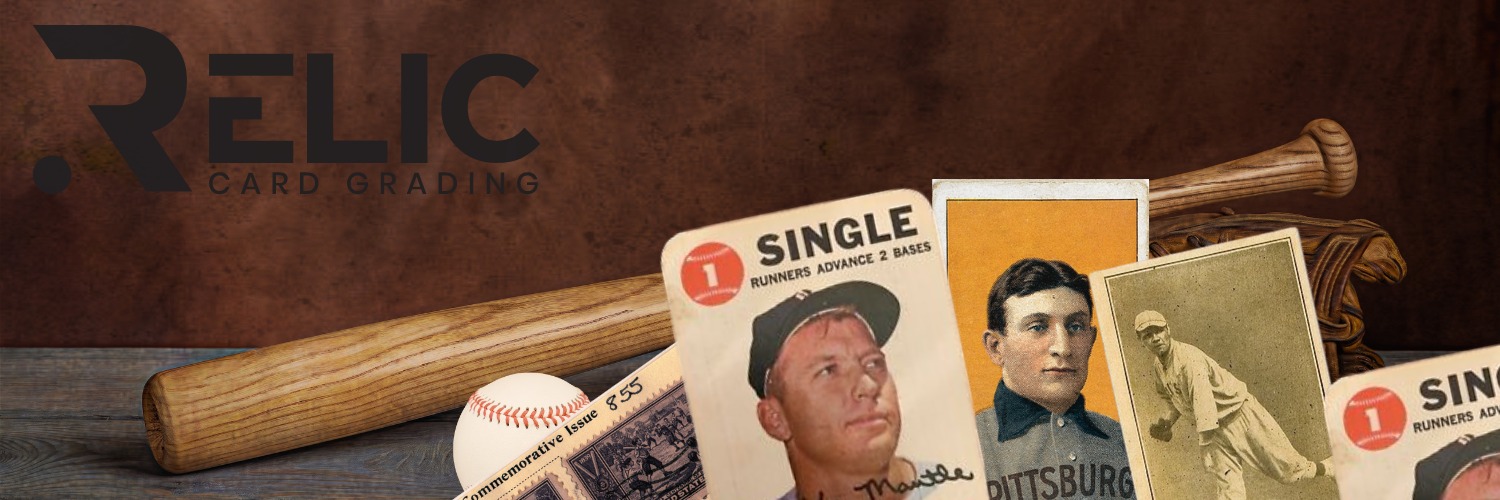
INTRO TO THE ICONS OF PRE-WAR BASEBALL CARDS
As discussed in the first part of our “History of Baseball Cards in America” series, the era defining the term “pre-war” card(s) varies depending on the collector, hobbyist, or historian. However, while pinpointing the exact era that defines “pre-war” cards may be confusing and equally complicated, there’s one thing that holds true; the early years of baseball cards are rooted in capturing iconic images of baseball icons who played pivotal roles in shaping baseball history. From the illustrious Honus Wagner to the unmatched prowess of Babe Ruth, this era saw legends who are still revered today.
Honus Wagner: The Flying Dutchman
No discussion of pre-war baseball cards is complete without acknowledging the T206 Honus Wagner card. While the card itself is iconic, Wagner’s influence on the sport is equally monumental. Known as the “Flying Dutchman,” Wagner’s skill on the field was unparalleled during his time, and his card remains a Holy Grail for many collectors. While scarcity of early Honus Wagner cards plays a major role in their present- day value, his accolades are also a major contributing factor. Here are some of Wagner’s accomplishments:
Hall of Famer: Wagner was part of the inaugural class of inductees into the Baseball Hall of Fame in 1936, alongside other legends like Babe Ruth, Ty Cobb, Christy Mathewson, and Walter Johnson.
Batting Titles: Wagner won eight National League batting titles (1900, 1903, 1904, 1907, 1908, 1909, 1911, and 1912). This ties him with Tony Gwynn for the most in NL history, and only Ty Cobb has more overall with 12.
World Series Champion: He played a pivotal role in the Pittsburgh Pirates’ victory in the 1909 World Series against the Detroit Tigers.
Career Statistics: In his career, Wagner accumulated over 3,400 hits, a .327 lifetime batting average, and stole 722 bases.
Versatile Player: Beyond his abilities at the plate, Wagner was known for his strong arm, range, and versatility. While he’s best remembered as a shortstop, he played every position except catcher during his career.
Baseball Card: His T206 baseball card, produced from 1909 to 1911, is one of the rarest and most valuable baseball cards ever made. Its scarcity is largely due to Wagner’s request to remove it from cigarette packs, possibly because he didn’t want to encourage smoking among young fans.
Legacy: Wagner’s number 33 is retired by the Pittsburgh Pirates, and he is often cited in discussions about the greatest baseball players of all time.
Coaching: After retiring as a player, Wagner served as a hitting coach for the Pirates, nurturing younger players and passing on his knowledge of the game.
Longevity: Wagner’s 21-season playing career was quite lengthy for his era, demonstrating both his talent and his durability.
Recognition: In 1999, he was named to the Major League Baseball All-Century Team, solidifying his legacy as one of the game’s all-time greats.
Throughout his life and career, Wagner was also known for his humility, sportsmanship, and integrity, making him not only a great player but a revered figure in the annals of baseball history.
Babe Ruth: The Sultan of Swat
Then came Babe Ruth, a figure synonymous with baseball’s Golden Age. His prodigious home runs and charismatic personality were immortalized on many cards of the time. Ruth wasn’t just a baseball player; he was an era-defining icon. The Topps baseball cards, and other card brands, bearing his image, are some of the most sought-after collectibles today. Babe Ruth’s accomplishments led to a litany of nicknames, including:
- The Bambino: Arguably his most famous nickname derived from the Italian word for “baby.”
- The Sultan of Swat: A nod to his impressive power and ability to hit home runs.
- The Big Bam: Another reference to his hitting prowess.
- The Colossus of Clout: An alliteration describing his unmatched baseball skill and influence.
- The King of Crash: A nod to the force and frequency of his home runs.
- The Great Bambino: A variation of “The Bambino” nickname.
While these nicknames vary, they all share a common theme: they pay homage to Babe Ruth’s unparalleled skills, larger-than-life personality, and legendary status in baseball.
Say Hello to "Shoeless" Joe & the Black Sox Scandal
“Shoeless” Joe Jackson received his unique nickname from an incident during his early baseball days. The story goes:
While playing for the Greenville Spinners in South Carolina, a minor league team, Jackson had bought a new pair of cleats. During one particular game, these cleats gave him painful blisters on his feet. The discomfort became so unbearable that when he came up to bat, he removed the cleats and stepped up to the plate in his stocking feet.
A fan in the stands reportedly shouted, “you shoeless son of a gun!” or something to that effect, referring to Jackson playing without his shoes on. Other attendees and players caught onto this, and the nickname “Shoeless Joe” stuck.
The “Black Box” Scandal
The “Black Sox” scandal revolves around the 1919 World Series between the Chicago White Sox and the Cincinnati Reds. Eight members of the Chicago team were accused of intentionally losing games in exchange for money from gamblers.
The Players Involved included:
- Eddie Cicotte
- Claude “Lefty” Williams
- Arnold “Chick” Gandil
- Oscar “Happy” Felsch
- George “Buck” Weaver
- Charles “Swede” Risberg
- Fred McMullin
- “Shoeless” Joe Jackson
Of these, Joe Jackson is perhaps the most famous, as he was one of the top players of his era.
Outcome: The scandal came to light in 1920, and while the accused players were acquitted of criminal charges in a 1921 trial, all eight were banned from professional baseball for life by Commissioner Kenesaw Mountain Landis. This decision remains controversial, especially in the case of “Shoeless” Joe Jackson, who many believe may have been innocent or less complicit than the others.
Impact: The Black Sox Scandal had a profound impact on baseball. It led to the appointment of the first Commissioner of Baseball, Kenesaw Mountain Landis, and the establishment of a centralized authority in baseball to maintain the sport’s integrity. The scandal also led to a series of measures designed to reaffirm public confidence in the game’s legitimacy and prevent such incidents in the future.
Despite Jackson’s alleged involvement in the Blac Sox Scandal, or maybe partially attributed to it, many of his cards are extremely sought-after by collectors. His Cracker Jack cards from 1915, featuring various images of Jackson, set against a fiery red background, remain to be some of the most desired cards from this period.
Ty Cobb: The Georgia Peach
Ty Cobb, known for his aggressive playing style and impressive career batting average, was another icon of this era. His cards, especially those in the T206 series, are revered not only for their representation of Cobb but also for the variations in backgrounds and poses.
Other Baseball Luminaries of the Pre-War Era
While Wagner, Ruth, Jackson, and Cobb are giants of the era, many other players left indelible marks. Players like Jackie Robinson, who broke racial barriers, and Lou Gehrig, known for his humility and consistency, were all critical figures of this age. Their contributions, both on the field and as card staples, shaped the baseball card hobby and the sport in countless ways.
Conclusion
Baseball cards from the pre-war era are more than just collectibles; they’re historical artifacts. Through them, we can trace societal changes, from the design and production intricacies due to wartime constraints to the evolving aesthetics matching the nation’s mood. These cards offer a lens through which to view baseball’s and America’s history. As we journey through baseball card history, the pre-war era stands out as a beacon, showcasing legendary players who transcended the sport. Their cards, coveted by collectors, are testaments to their lasting legacy.
MORE FROM THE "HISTORY OF BASEBALL CARDS IN AMERCIA" SERIES
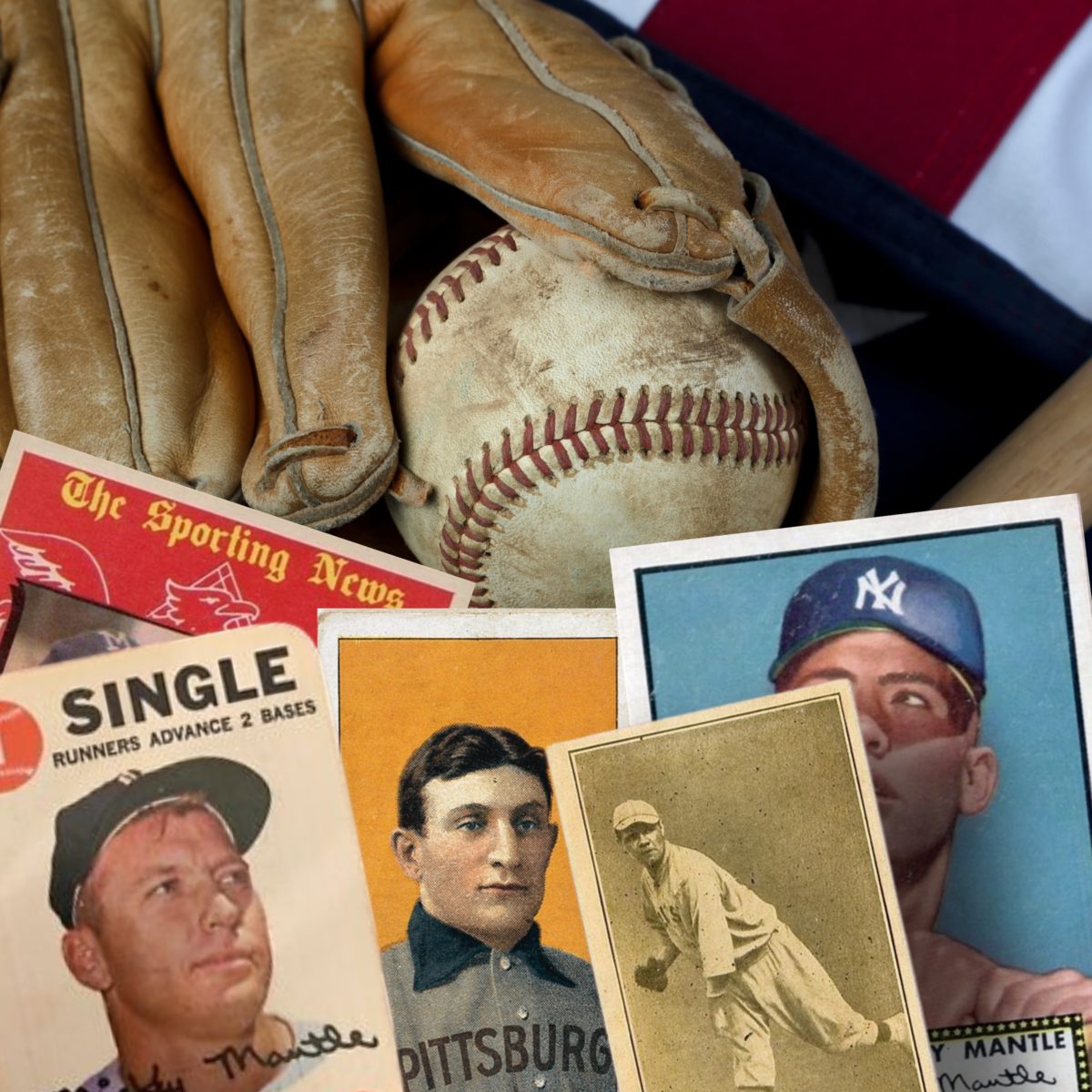
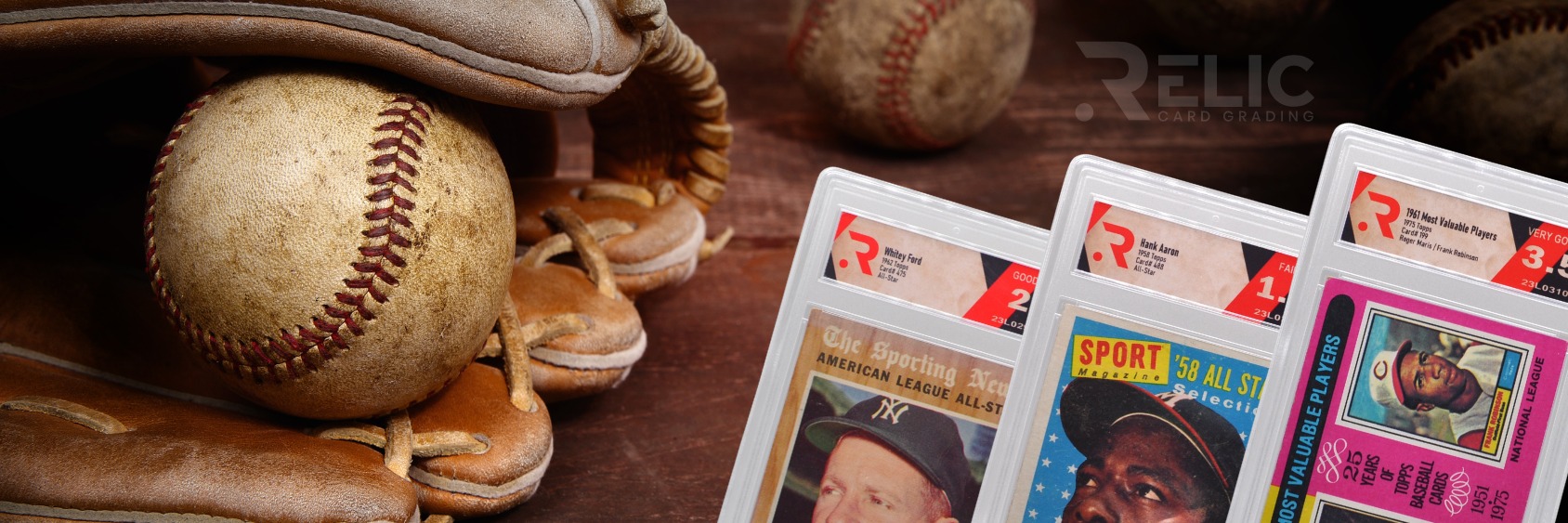
SECTION 1: AN INTRODUCTION TO BASEBALL CARD IN AMERICA
Baseball cards have evolved immensely over the years. From simple tobacco pack inserts to today’s highly sought-after Topps collections, these cards are a testament to America’s enduring passion for baseball. The tradition of collecting, trading, and investing in baseball cards has strong roots in American culture and the evolution of this hobby is nothing short of amazing. In this article, we will introduce you to a variety of transformational events that shaped the baseball card, and sports card industry as a whole, into what it is today.
The Inception of Baseball Cards
Before they became prized possessions safely kept in penny sleeves, top-loaders, special trading card binders, magnetic holders, and graded slabs, baseball cards had a rather modest inception. Born in the late 19th century, they initially accompanied tobacco products. Serving as stiffeners for cigarette packs, these cards doubled as advertisements for tobacco brands. Each card featuring players from different baseball teams not only promoted the brand but inadvertently marked the birth of the collecting hobby.
Within this realm of early baseball cards, the T206 Honus Wagner stands out as one of the most historically sought-after cards ever produced. Produced and distributed between 1909 and 1911, its scarcity was born from a rumored’ objection by Wagner, disapproving of his image promoting tobacco, especially to young fans. Today, the T206 Wagner is a pinnacle of card collecting, often commanding millions in auctions. It remains a symbolic piece, illustrating the era’s simplicity and the baseball card collecting hobby’s roots. As we will discuss later in this article, scarcity, quality, and historical relevance all play major roles in the value of both vintage and modern-day cards, however, for now, let’s continue on our journey through the anals of baseball card lore.
2025 Topps Series 1 Baseball - Factory Sealed - Value Box
Features
| Global Trade Identification Number | 00887521132621 |
| Year | 2025 |
| Product Dimensions | 5 x 3.5 x 2.83 inches |
| Item Weight | 6.9 ounces |
| ASIN | B0DWYYPRYL |
| Item model number | CBTB225963 |
| Manufacturer | Topps |
- Celebrate the Unofficial Start of Baseball: Topps Series 1 is collectors' and fans' first chance to embrace the start of the season and their love for the game. You can find yourself a baseball card box that includes the league's current stars, team cards, and rising rookies.
- Variety of Baseball Packs: Series 1 baseball card packs include base cards with sluggers like the 2024 American League MVP Aaron Judge, aces like 2024 National League Cy Young, Award-winner Chris Sale, and rookies Dylan Crews and James Wood Jr. They also celebrate 1990 Topps Baseball 35th Anniversary Insert cards with 2024 National League MVP and World Series champion Shohei Ohtani.
- Lead Off 2025 with the Value Box: 2025 Topps Series 1 covers the needs of every collector and fan. With 12 cards per pack and 7 packs per box, the Value Box is a set that sets the tone for the season.
- Sets for Every Collector Type: Whether you’re a set collector in the early stages of building your collection, a player collector rounding out your complete set, a team collector who cherishes your club’s history, or any other type, 2025 Series 1 will be a special addition to your collection. There are several ways to collect. However you choose to, remember having fun is the driving force behind every collection.
- Significance of 2025 Topps Baseball Cards: Some of the most beloved cards in baseball history come from Topps. The inaugural set includes arguably the most important card in Hobby history: The 1952 Topps Mickey Mantle card, his first ever Topps baseball card. What this season’s baseball card packs represent has yet to be determined, but they do present you with an opportunity to connect with the history of the game.
Evolving Beyond Tobacco Cards
As America transitioned into the 20th century, the scope of baseball cards broadened. While they still found their place in tobacco products, new avenues emerged. Caramel candies, chewing gums, and even newspapers began featuring baseball and entertainment cards. This diversification signified more than a mere shift in distribution; it underlined the escalating popularity of baseball cards, making them promotional gold for various industries. While collecting these cards may not have been front of mind during this era, the marketing value and novelty of these now highly sought after cards drove the industry in the early 20th century.
Tracing the journey of baseball cards from their inception to their current revered status offers fascinating insights into both the sport’s history and its commercial evolution. As we progress, we’ll uncover more layers, stories, and the ever-evolving nature of these cherished collectibles.
SECTION 2: DEFINING THE PRE-WAR ERA OF BASEBALL CARDS
Defining “pre-war baseball cards” has been a subject of debate among collectors and enthusiasts. The term “pre-war” typically refers to the period before World War II, but as with many categorizations in the realm of collectibles, the specifics can sometimes be contested. Below you will find some of the major arguments and perspectives on defining the pre-war era of baseball cards.
Pre-War Baseball Card Era: Based on World Wars
- Before World War II (1939-1945): Likely the most common definition is that any card produced before the United States’ involvement in World War II (around 1941 for the U.S.) is considered a pre-war card. This is a more generalized definition and spans a considerable period, including cards from the late 19th century through the early 1940s.
- Before World War I (1914-1918): Some collectors, especially purists, argue that the true “pre-war” cards are those issued before the onset of World War I. This focuses on cards issued predominantly in the late 19th century up to 1914.
Pre-War Baseball Card Era: Based on Production Era
- Tobacco Card Era: Some define pre-war cards by their association with the tobacco industry, primarily from 1909 to 1915. The T206 series, which featured players like Honus Wagner, is a prime example from this period.
- Candy and Gum Cards: Cards from the 1920s and 1930s were often associated with candy and gum products. Some collectors use this era, especially the 1930s, as the endpoint for pre-war cards.
SECTION 3: THE IMPACT OF EARLY ERA EVENTS ON BASEBALL CARDS
As you can see, there is a bit of controversy and confusion that comes along with using the term “pre-war cards.” However, it is safe to say that many factors have influence card production, and the hobby, in the early years of collecting. Let’s take a look at some other historical events that helped shape the early years of baseball card production and collecting.
Early Era Impact: The Evolution of the Game
Another perspective is to associate different eras in baseball card history with significant events or shifts in the world of baseball. For instance, Babe Ruth’s debut in the 1910s changed the game fundamentally. The Bambino’s play style created forever changed the game and led to more emphasis on power and home runs. Some might use such significant baseball milestones as markers to define eras. Regardless of how you define the various eras of baseball card history, we can agree that certain athletes had a profound impact on the game and the baseball card collecting hobby. Afterall, we still see modern day baseball cards depicting the legends and pioneers of the game.
Early Era Impact: Economic Considerations
The period leading up to the U.S. involvement in WWII was marked by the Great Depression. Economic realities greatly influenced the production and distribution of baseball cards. Some argue that these economic conditions play a role in defining the pre-war era, highlighting how scarcity and card quality were influenced by broader societal factors.
Early Era Impact: Cultural & Aesthetic Differences
It’s safe to say, cards before and during the WWII era have a distinct look and feel, often hand-colored and bearing unique designs, especially when compared to post-WWII cards that became more standardized. Some collectors emphasize this aesthetic difference as a defining factor when defining “pre-war” vs. “post-war” cards.
MORE FROM THE "HISTORY OF BASEBALL CARDS IN AMERCIA" SERIES
1990: Classic WWF Wrestling Cards and Checklist
- Post author By Relic Card Grading
- Post date August 8, 2023
- No Comments on 1990: Classic WWF Wrestling Cards and Checklist

Introduction to the 1990 WWF Wrestling Card Set
Professional wrestling in the late 1980s and early 1990s was a phenomenon unlike any other. At the forefront of this global wrestling renaissance was the World Wrestling Federation (WWF), now known as the WWE. It was during this golden age of wrestling that the 1990 WWF Classic Card Set was introduced, providing fans with a tangible piece of their favorite wrestling superstars.
1990 WWF Wresting Cards: Origin and Production
The 1990 WWF Classic Card Set was produced by Classic Games Inc. This was a departure from the more common baseball, football, and basketball cards that had dominated the sports card scene until then. This was not the first set of wrestling cards produced, but this set was a vast improvement over prior wrestling cards produce before the 1990 WWF Classic Card Set. This unique collection provided fans with a new avenue to connect with their beloved wrestling stars.
A striking feature of the cards was their simplicity and clarity. The front boasted a high-quality, full-color photo of the wrestler or WWF personality, proudly marked with the WWF logo (along with the Classic logo), making it instantly recognizable. The reverse side of the card was in stark contrast to the overtly colorful images found on the front of the card. Wrestler bios were found on the back of the card set against a plain white background. Aside from featuring statistics, famous wrestling moves, special feats/talents, and unusual characteristics, the back of the card was a bit lackluster. However, there’s still much to love about the 1990 WWF Wrestling Card Set.
The Main Event: The Wrestlers
The 1990 set was not just about the in-ring performers. It encapsulated the entire WWF universe. Alongside iconic wrestlers like Hulk Hogan, Macho Man Randy Savage, and the Ultimate Warrior, fans could find cards of managers, such as Bobby “The Brain” Heenan, announcers like Jesse “The Body” Ventura, and even referees like Freddie Blassie and Danny Davis.
Over the years, the 1990 WWF Classic Card Set has gained value among collectors, especially in mint condition. Cards of top wrestlers and first appearances are particularly sought after. However, for many, the value isn’t just monetary. Holding a card from the set is like possessing a piece of wrestling history, evoking memories of classic matches, storylines, and the larger-than-life personalities that defined the era.
Conclusion: WWF Wrestling Card History
The 1990 WWF Classic Card Set remains a testament to a time when professional wrestling bridged the gap between sport and entertainment, captivating audiences worldwide. For many fans, these cards are nostalgic or simply a portal to their childhood, reminding them of the golden age of wrestling. For new collectors, they offer a glimpse into the rich history of wrestling’s past. Either way, the 1990 WWF Classics Card Set will always hold a special place in the annals of wrestling memorabilia.
1990 Classic WWF Wrestling Checklist: Base Set
1 – Hulk Hogan
2 – Big Boss Man
3 – Ravishing Rick Rude
4 – “Macho King”Randy Savage
5 – The Ultimate Warrior
6 – Demolition
7 – Jake “The Snake” Roberts
8 – “The Million Dollar Man” Ted Dibiase
9 – Hacksaw Jim Duggan
10 – Andre The Giant
11 – Miss Elizabeth
12 – Brutus “The Barber” Beefcake
13 – Rowdy Roddy Piper
14 – Superfly Jimmy Snuka
15 – Bushwackers
16 – Dusty Rhodes
17 – Hercules
18 – Sensational Queen Sherri
19 – Mr. Perfect
20 – “The Model” Rick Martel
21 – Tito Santana
22 – Mr. Fuji
23 – Jimmy “Mouth of the South” Hart
24 – Brother Love
25 – Akeem
26 – Bad News Brown
27 – Honky Tonk Man
28 – The Rockers
29 – Koko B. Ware
30 – Bobby “The Brain” Heenan
31 – Dino Bravo
32 – The Genius
33 – Greg “The Hammer” Valentine
34 – Virgil
35 – Haku
36 – Rugged Ronnie Garvin
37 – Bret “Hitman” Hart
38 – Hart Foundtion
39 – Red Rooster
40 – Hillbilly Jim
41 – Slick
42 – The Widow Maker
43 – The Ultimate Warrior
44 – Honky Tonk Man
45 – Bret “Hitman” Hart
46 – Jim “The Anvil” Neidhart
47 – Bushwackers
48 – Paul Roma
49 – Barry Horowitz
50 – Brooklyn Brawler
51 – Mean Gene Okerlund
52 – Gorilla Monsoon
53 – Jesse “The Body” Ventura
54 – Sean Mooney
55 – Danny Davis
56 – Jack Tunney
57 – Hulk Hogan
58 – Big Boss Man
59 – Ravishing Rick Rude
60 – “Macho King” Randy Savage
61 – The Ultimate Warrior
62 – Demolition
63 – Jake “The Snake” Roberts
64 – “The Million Dollar Man” Ted Dibiase
65 – Hacksaw Jim Duggan
66 – Andre The Giant
67 – Miss Elizabeth
68 – Brutus “The Barber” Beefcake
69 – Superfly Jimmy Snuka
70 – Bushwackers
71 – Dusty Rhodes
72 – Hercules
73 – Sensational Queen Sherri
74 – Mr. Perfect
75 – Jimmy “Mouth of the South” Hart
76 – Andre The Giant
77 – Brother Love
78 – Akeem
79 – Bad News Brown
80 – Honky Tonk Man
81 – The Rockers
82 – Koko B. Ware
83 – Bobby “The Brain” Heenan
84 – Dino Bravo
85 – The Genius
86 – Greg “The Hammer” Valentine
87 – Virgil
88 – Haku
89 – Rugged Ronnie Garvin
90 – Hulk Hogan
91 – Red Rooster
92 – Hillbilly Jim
93 – The Widow Maker
94 – Freddie Blassie
95 – Bret “Hitman” Hart
96 – Jim “The Anvil” Neidhart
97 – Demolition
98 – Paul Roma
99 – Barry Horowitz
100 – Brooklyn Brawler
101 – Danny Davis
102 – Hulk Hogan
103 – Big Boss Man
104 – Ravishing Rick Rude
105 – “Macho King” Randy Savage
106 – The Ultimate Warrior
107 – Demolition
108 – Jake “The Snake” Roberts
109 – “The Million Dollar Man” Ted Dibiase
110 – Hacksaw Jim Duggan
111 – Andre The Giant
112 – Miss Elizabeth
113 – Brutus “The Barber” Beefcake
114 – Superfly Jimmy Snuka
115 – Tito Santana
116 – Bushwackers
117 – Honky Tonk Man
118 – The Rockers
119 – Koko B. Ware
120 – Haku
121 – The Rockers
122 – Red Rooster
123 – Bret “Hitman” Hart
124 – Jim “The Anvil” Neidhart
125 – Hulk Hogan
126 – “Macho King” Randy Savage
127 – The Ultimate Warrior
128 – Demolition
129 – Hulk Hogan
130 – Andre The Giant
131 – Superfly Jimmy Snuka
132 – Bushwackers
133 – Honky Tonk Man
134 – The Rockers
135 – Haku
The 1990 WWF Promo Cards
There are also 5 promo cards found within the 1990 WWF Classic Card Set. The promo cards sport a purple border and feature individual images of Hulk Hogan, The Bushwackers, Brutus “The Barber” Beefcake, Ultimate Warrior, or Randy Savage.
- Tags Shipping
2023 Pokémon: Scarlet and Violet Checklist
- Post author By Relic Card Grading
- Post date August 8, 2023
- No Comments on 2023 Pokémon: Scarlet and Violet Checklist

2023 Pokémon Scarlet & Violet Introduction
The complete Pokémon Scarlet & Violet set contains 258 total cards which includes the standard set + standard set foil cards that make up the first 198 cards and the “secret rare” cards which are numbered from 199 – 258. The secret rare card set is broken down into a few different types of rarities which include cards 199 – 222 (Illustration Rare), 223-242 (Ultra Rare), 243 -252 (Special Illustration Rare), and 253-258 (Hyper Rare). The most sought-after cards in this set are Miram (Special Illustration Rare – 251), Miraidon ex (Special Illustration Rare – card 244), and the Miriam (Ultra Rare – card 238). The Special Illustration Rare cards also include Gardeveoir ex, Spidops ex, Great Tusk ex, Arven, Jacq, Penny, and others.
The launch of the Scarlet & Violet set saw Pokémon shift away from the yellow card border seen in the Sword & Shield generation and moved to a silver/grey border, with the standard holographic versions sporting a silver foil border to set them apart from other base cards. See the complete 2023 Pokémon Scarlet & Violet checklist below.
2023 Pokémon: Scarlet & Violet Checklist: Base Set
001/198 – Pineco
002/198 – Heracross
003/198 – Shroomish
004/198 – Breloom
005/198 – Cacnea
006/198 – Cacturne
007/198 – Tropius
008/198 – Scatterbug
009/198 – Spewpa
010/198 – Vivillon
011/198 – Skiddo
012/198 – Gogoat
013/198 – Sprigatito
014/198 – Floragato
015/198 – Meowscarada
016/198 – Tarountula
017/198 – Tarountula
018/198 – Tarountula
019/198 – Spidops ex
020/198 – Smoliv
021/198 – Smoliv
022/198 – Dolliv
023/198 – Arboliva
024/198 – Toedscool
025/198 – Toedscool
026/198 – Toedscruel
027/198 – Capaskid
028/198 – Capaskid
029/198 – Scovillain
030/198 – Growlithe
031/198 – Growlithe
032/198 – Arcanini ex
033/198 – Houndour
034/198 – Houndoom
035/198 – Torkoal
036/198 – Fuecoco
037/198 – Crocalor
038/198 – Skeledirge
039/198 – Charcadet
040/198 – Charcadet
041/198 – Armarouge
042/198 – Slowpoke
043/198 – Slobro
044/198 – Magikarp
045/198 – Gyarados ex
046/198 – Buizel
047/198 – Floatzel
048/198 – Alomomola
049/198 – Clauncher
050/198 – Clawitzer
051/198 – Bruxish
052/198 – Quaxkly
053/198 – Quaxwell
054/198 – Quaquaval
055/198 – Wiglett
056/198 – Wiglett
057/198 – Wugtrio
058/198 – Cetoddle
059/198 – Cetoddle
060/198 – Cetitan
061/198 – Dondozo
062/198 – Tatsugiri
063/198 – Magnemite
064/198 – Magneton
065/198 – Magnezone ex
066/198 – Mareep
067/198 – Flaaffy
068/198 – Pachirisu
069/198 – Rotom
070/198 – Rotom
071/198 – Toxel
072/198 – Toxtricity
073/198 – Pawmi
074/198 – Pawmi
075/198 – Pawmo
076/198 – Pawmot
077/198 – Wattrel
078/198 – Wattrel
079/198 – Kilowattrel
080/198 – Miraidon
081/198 – Miraidon ex
082/198 – Drowzee
083/198 – Hypno
084/198 – Ralts
085/198 – Kirlia
086/198 – Gardevoir ex
087/198 – Shuppet
088/198 – Banette ex
089/198 – Drifloon
090/198 – Drifblim
091/198 – Flabébé
092/198 – Floette
093/198 – Florges
094/198 – Dedenne
095/198 – Dedenne
096/198 – Klefki
097/198 – Fidough
098/198 – Fidough
099/198 – Dachsbun
100/198 – Flittle
101/198 – Flittle
102/198 – Flittle
103/198 – Espathra
104/198 – Greavard
105/198 – Greavard
106/198 – Houndstone
107/198 – Mankey
108/198 – Primeape
109/198 – Annihilape
110/198 – Meditite
111/198 – Medicham
112/198 – Riolu
113/198 – Riolu
114/198 – Lucario
115/198 – Sandile
116/198 – Krokorok
117/198 – Krookodile
118/198 – Hawlucha
119/198 – Silicobra
120/198 – Sandaconda
121/198 – Stonjourner
122/198 – Klawf
123/198 – Great Tusk ex
124/198 – Koraidon
125/198 – Koraidon ex
126/198 – Grimer
127/198 – Muk
128/198 – Seviper
129/198 – Spiritomb
130/198 – Croagnuk
131/198 – Toxicroak ex
132/198 – Pawniard
133/198 – Bisharp
134/198 – Kngambit
135/198 – Maschiff
136/198 – Maschiff
137/198 – Mabosstiff
138/198 – Bobirdier
139/198 – Forretress
140/198 – Varoom
141/198 – Varoom
142/198 – Revavroom
143/198 – Iron Treads ex
144/198 – Chansey
145/198 – Blissey
146/198 – Zangoose
147/198 – Zangoose
148/198 – Starly
149/198 – Staravia
150/198 – Staraptor
151/198 – Skwovet
152/198 – Greedent
153/198 – Indeedee
154/198 – Lechonk
155/198 – Lechonk
156/198 – Lechonk
157/198 – Oinkologne
158/198 – Oinkologne ex
159/198 – Tandemaus
160/198 – Tandemaus
161/198 – Maushold
162/198 – Squawkabilly
163/198 – Cyclizar
164/198 – Cyclizar
165/198 – Flamigo
166/198 – Arven
167/198 – Beach Court
168/198 – Crushing Hammer
169/198 – Defiance Band
170/198 – Electric Generator
171/198 – Energy Retrieval
172/198 – Energy Search
173/198 – Energy Switch
174/198 – Exp. Share
175/198 – Jacq
176/198 – Judge
177/198 – Katy
178/198 – Mesagoza
179/198 – Miriam
180/198 – Nemona
181/198 – Nest Ball
182/198 – Pal Pad
183/198 – Penny
184/198 – Picnic Basket
185/198 – Poké Ball
186/198 – Pokégear 3.0
187/198 – Pokémon Catcher
188/198 – Potion
189/198 – Provessor’s Research
190/198 – Professor’s Research
191/198 – Rare Candy
192/198 – Rock Chestplate
193/198 – Rocky Helmet
194/198 – Switch
195/198 – Team Star Grunt
196/198 – Ultra Ball
197/198 – Vitality Band
198/198 – Youngster
2023 Pokémon: Scarlet & Violet Checklist: Secret Cards
199/198 – Tarountula
200/198 – Dolliv
201/198 – Toedscool
202/198 – Scovillain
203/198 – Armarouge
204/198 – Slowpoke
205/198 – Clauncher
206/198 – Wiglett
207/198 – Dondozo
208/198 – Pachirisu
209/198 – Pawmot
210/198 – Drowzee
211/198 – Ralts
212/198 – Kirlia
213/198 – Fidough
214/198 – Greavard
215/198 – Riolu
216/198 – Sandile
217/198 – Klawf
218/198 – Mabosstiff
219/198 – Bombirdier
220/198 – Kingambit
221/198 – Starly
222/198 – Skwovet
223/198 – Spidops ex
224/198 – Arcaninie ex
225/198 – Gyarados ex
226/198 – Magnezone ex
227/198 – Miraidon ex
228/198 – Gardevoir ex
229/198 – Banette ex
230/198 – Great Tusk ex
231/198 – Koraidon ex
232/198 – Toxicroak ex
233/198 – Iron Treads ex
234/198 – Oinkologne ex
235/198 – Arven
236/198 – Jacq
237/198 – Katy
238/198 – Miriam
239/198 – Penny
240/198 – Professor’s Research
241/198 – Professor’s Research
242/198 – Team Star Grunt
243/198 – Spidops ex
244/198 – Miraidon ex
245/198 – Gardevoir ex
246/198 – Great Tusk ex
247/198 – Koraidon ex
248/198 – Iron Treads ex
249/198 – Arven
250/198 – Jacq
251/198 – Miriam
252/198 – Penny
253/198 – Miraidon ex
254/198 – Koraidon ex
255/198 – Nest Ball
256/198 – Rare Candy
257/198 – Basic Energy
258/198 – Basic Energy
- Tags Shipping
Charizard Ultra-Premium Pokémon Collection
- Post author By Relic Card Grading
- Post date August 3, 2023
- No Comments on Charizard Ultra-Premium Pokémon Collection

The Charizard Ultra-Premium Collection: A Must Have for Pokémon Enthusiasts
In the expansive world of Pokémon, Charizard has always reigned as one of the most iconic and sought-after creatures. With the release of the Charizard Ultra-Premium Collection, the fiery dragon-like Pokémon again claims the spotlight, offering a great opportunity for both serious collectors and casual fans to own another piece of Charizard history.
Charizard Ultra-Premium Box: The Grandeur of the Collection
The Charizard Ultra-Premium Collection is, in essence, a tribute to one of the most popular Pokémon characters of all time. This special edition box pulls together an array of items designed to celebrate Charizard’s history and appeal. The set’s premium nature extends beyond the cards themselves, with packaging and extra content that exudes quality and grandeur.
Ultra-Premium Charizard Collection: What's in the Box?
The highlight of the Charizard Ultra-Premium collection, of course, are the cards themselves. However, there are some other exciting extras in this box as well. The box contains the following Pokémon items:
- Playmat featuring Gigantamax Charizard
- 3 foil promo cards: Charizard V, Charizard VMAX, and Charizard VSTAR
- 65 cards featuring Giganatamax Charizard
- 1 metal game play coin featuring Gigantamax Charizard
- 16 booster packs from the Sword & Shield series
- 6 metal damage-counter dice and 2 condition markers\
- Player’s guide to the Sword & Shield series
- 1 acrylic VSATR marker
- TCG redemption code for Pokémon TCG Live
Charizard Ultra-Premium Collection: A Possible Investment?
For serious collectors, the Charizard promo cards included in the Ultra-Premium Collection could have some investment potential. In the past, exclusive Charizard cards, such as the Shiny Charizard V from the Champions Path set or the Charizard VMAX from Darkness Ablaze, have garnered considerable secondary market interest. The limited availability of these ultra-premium sets makes them even more sought after.
The Magic of Charizard
Why does Charizard, among hundreds of Pokémon, get such special treatment? Charizard has been a fan favorite since the beginning of the franchise, largely due to its dragon-like design, impressive power, and central role in the Pokémon anime where it was one of Ash’s main Pokémon. The Charizard Ultra-Premium Collection is a recognition of this enduring popularity, offering a chance for fans to connect with the franchise’s history in a unique way.
Conclusion
The Charizard Ultra-Premium Collection is an exciting offering for any Pokémon TCG collector or enthusiast. With its stunning range of exclusive items and premium packaging, this set is sure to evoke the sense of wonder that makes collecting Pokémon cards a joy. Whether you’re a seasoned collector hunting for the next unique addition to your collection, a casual player wanting to enhance your gameplay, or a Charizard devotee wanting to celebrate your favorite Pokémon, the Charizard Ultra-Premium Collection offers something truly special.
- Tags Shipping
What are TCG Cards: A Brief History
- Post author By Relic Card Grading
- Post date August 3, 2023
- No Comments on What are TCG Cards: A Brief History

Introduction to TCG (Trading Card Games)
Trading Card Games (TCGs), also known as Collectible Card Games (CCGs), have taken the world by storm. As a unique blend of collectibles and strategic gameplay, TCGs offer a distinctive hobby experience that combines elements of collecting, competition, and camaraderie. This article will delve into the world of TCGs, exploring their origins, their appeal, and the impact they’ve had on popular culture.
A Brief History of TCG (Trading Card Games)
While trading cards have been around for centuries, the concept of TCGs is relatively recent. The inception of the modern TCG is widely credited to “Magic: The Gathering” (MTG) (Affiliate Link), developed by Richard Garfield and published by Wizards of the Coast in 1993. MTG revolutionized the concept of collectible cards by adding strategic gameplay elements, turning each card into a playable unit with unique abilities and attributes.
The success of “Magic: The Gathering” sparked a new genre in the gaming industry. Other games quickly emerged, including “Pokémon” and “Yu-Gi-Oh! (Affiliate Link),” both of which capitalized on popular anime series to attract a young audience. Other TCGs, like “Hearthstone” and “Legend of the Five Rings,” have found success by appealing to fans of fantasy and strategy games. Even Disney is getting in on the game with the launch of various TCG titles featuring legendary Disney characters.
The Allure of TCG Games
One of the major attractions of TCGs is their dual nature: they’re both collectibles and games. On one hand, like sports or celebrity trading cards, TCG cards are collectibles that can be traded, displayed, or stored for future value. Many TCG players take great joy in collecting rare or valuable cards, known in the community as “chase cards.”
On the other hand, TCGs are games, requiring strategy and skill to play. Each TCG has its unique set of rules and mechanics, which might involve battling, capturing, storytelling, or building. Players must carefully assemble their decks, considering the strengths, weaknesses, and synergies of their cards. This strategic element adds a depth to TCGs that many find fascinating and rewarding.
The Impact of TCGs on Pop Culture
TCGs have had a significant impact on Pop culture. For instance, the Pokémon TCG, in synergy with the Pokémon video games and anime series, was a major contributor to the global “Pokémania” phenomenon in the late 1990s and early 2000s. Today, the Pokémon TCG remains popular, and rare cards can fetch high prices on the collector’s market. Many collectors turn to card grading companies to protect their favorite or most valuable cards.
In addition, TCGs have inspired a vibrant competitive scene. High-stakes tournaments, like the MTG Pro Tour or the Pokémon World Championships, attract players from around the globe. These events not only offer substantial prizes but also help build a sense of community among players.
The digital world has also embraced TCGs. Digital-only TCGs, like “Hearthstone,” have gained popularity, offering the TCG experience in a convenient, online format. Meanwhile, physical TCGs often have online counterparts, allowing players to collect and compete virtually. Most modern-day packs of Pokémon cards come with redemption codes which enable players to open virtual Pokémon packs online which can be used to play the online version of the game.
Conclusion: TCG Cards and Games
Trading Card Games represent a unique intersection of collecting and strategic gameplay, offering a dynamic hobby that has captivated millions worldwide. Whether it’s the thrill of pulling a rare card from a booster pack, the satisfaction of executing a winning strategy, or the joy of sharing a hobby with a like-minded community, TCGs offer an array of pleasures that make them a cherished pastime for many. As TCGs continue to evolve, their influence and appeal are set to endure and expand, promising new experiences for the next generation of players and collectors.
- Tags Shipping
Panini and Fanatics: What’s Next?
- Post author By Relic Card Grading
- Post date August 3, 2023
- No Comments on Panini and Fanatics: What’s Next?

Introduction: Panini and Fanatics & The Future of the Sports Card Industry
In the ever-evolving landscape of sports memorabilia and trading cards, two industry giants have emerged to capture the attention and loyalty of collectors worldwide. Panini and Fanatics are both known for their quality, innovation, and global brand loyalty. Both companies have a stranglehold on their respective market segments and are household names among collectors.
At the time of writing, there was no definitive answer as to whether or not these two industry giants will eventually become one, but there is much speculation regarding the possibility. That said, let’s take a closer look at the history of these two behemoths and try to make sense of what the future may be for the sports and trading card industry.
Panini: A Global Giant
Panini: Sports Card Diversity & Loyalty
The Panini Group has established itself as a leader in sports trading cards, offering a broad and diverse array of products to meet the tastes and budgets of collectors. They offer multiple product lines, with different designs, special features, and price points. While I can provide a general overview of their offerings, it’s important to note that this list may not be exhaustive, as Panini continues to innovate and create new collections. As of my knowledge cutoff in September 2021, the following are some of the key product lines:
Prizm: Prizm is one of Panini’s most popular lines, renowned for its innovative design and the use of colored refractor technology.
Select: Select cards feature multiple tiers of rarity within the set like their premier, and courtside (or equivalent) levels.
Contenders: The Contenders series is especially popular for its “Rookie Ticket” autographs, which feature signatures from top rookies.
Donruss: The Donruss line is a nod to traditional card designs. It includes the much-coveted “Rated Rookie” cards.
National Treasures: This is a high-end product line that features autographs, memorabilia cards, and a range of inserts.
Flawless: This is another high-end line known for including diamonds, sapphires, and other precious gems embedded in the cards.
Immaculate: The Immaculate collection offers high-quality card designs, with a focus on patch autographs and unique memorabilia.
Absolute Memorabilia: This line is known for featuring memorabilia pieces alongside player images.
Mosaic: This is a relatively newer product that quickly gained popularity due to its unique mosaic design and refractor-style look.
Chronicles: The Chronicles series is unique in that it features a variety of different Panini brands all in one set.
Optic: Optic is popular among collectors due to its chrome finish and includes “Rated Rookies” and autograph cards.
Spectra: Spectra cards are known for their thick card stock and vibrant, colorful designs.
Again, this list is not exhaustive, and Panini is always producing new and innovative trading card products to cater to the evolving tastes of collectors. One thing is for sure, Panini has done a remarkable job of elevating the trading card industry and creating cards that are worth the chase.
Fanatics: The New Kid on the Block
Fanatics, meanwhile, has been making waves in the sports merchandise industry since its establishment in 1995. Although newer to the scene, Fanatics has made its mark with a diversified portfolio, including apparel, gear, and now trading cards. With their aggressive business strategy and strong relationships with key sports leagues, they have earned exclusive licenses to produce merchandise for major professional sports organizations, including the NFL, NBA, and MLB.
In 2021, Fanatics made headlines by securing exclusive trading card rights to the MLB, NFL, and NBA, shaking the collectibles industry. This essentially propelled Fanatics into a direct competition with established players like Panini and Topps, marking the start of a new era in the world of sports memorabilia. However, in early 2022, Fanatics announced the purchase of Topps which gave them exclusive rights to trading cards for MLB.
In 2026, Fanatics will control the vast majority of the sports memorabilia and trading card market segments. Where does this leave Panini?
Fanatics: The Histroy of the Memorabilia Giant
Fanatics, Inc. is a leading online retailer of licensed sports apparel and merchandise, known for its e-commerce platform and relationships with many major professional sports leagues. Here’s a closer look at the history of this dynamic sports memorabilia company.
Fanatics has humble beginnings. It started as a brick-and-mortar storefront named Football Fanatics in Jacksonville, Florida, in 1995. Alan Trager, the founder, initially focused on selling sports merchandise related to Jacksonville Jaguars, a newly formed NFL team. The business gradually expanded its inventory to include apparel and merchandise from other teams and leagues.
In 2002, recognizing the potential of the internet, Football Fanatics made a strategic move and launched its e-commerce platform. This move brought a significant increase in sales and allowed the company to expand its product offerings beyond football to include other popular sports like baseball, basketball, hockey, and even collegiate sports merchandise.
In 2011, the company caught the attention of Michael Rubin, founder of GSI Commerce, a leading provider of e-commerce solutions. Rubin’s company Kynetic LLC acquired Fanatics for $277 million, transforming it into an e-commerce giant.
Following the acquisition, the company was rebranded as Fanatics, Inc. The company expanded rapidly, developing partnerships with professional sports leagues, teams, and media companies. Fanatics became the exclusive online retailer for the NFL, NBA, MLB, NHL, NASCAR, PGA, and UFC, among others.
In the years following the rebranding, Fanatics continued to grow its business and influence. In 2013, it acquired Dreams Inc., adding an array of autographed memorabilia to its product lineup. Fanatics also began to acquire rights to produce sports apparel, essentially becoming a competitor to sports manufacturing giants like Nike and Adidas.
In 2017, SoftBank Group’s Vision Fund led a $1 billion investment in Fanatics, which increased the company’s value to $4.5 billion. This investment allowed the company to pursue ambitious plans, including international expansion and further diversification of its offerings.
The company’s approach shifted from purely retail to a vertical commerce model, where it controls the design, manufacturing, and direct-to-consumer sales of a significant portion of its merchandise. This transition allowed Fanatics to respond swiftly to market trends and meet demand efficiently, revolutionizing the licensed sports merchandise industry.
As mentioned earlier, in 2021, Fanatics made significant inroads into the trading card industry, securing exclusive rights to produce trading cards for the MLB, NFL, and NBA.
Fanatics & Panini: Potential Synergy
At the time of writing, Panini and Fanatics are still separate companies. However, with Panini losing exclusive trading card rights for the NFL and NBA, the future is a bit uncertain. However, both companies also stand to gain immensely if Fanatics were to buy Panini.
Both Panini and Fanatics have had strong partnerships with major sports leagues around the world and a potential acquisition may add to the strengh of pre-existing business relationships. In addition to this, leveraging both Topps and Panini’s knowledge of the sports card market and their innovative approach to diversifying modern day sports card portfolios, a combined company could drive innovation well into the future. In short, by securing exclusive rights, Fanatics could lend credibility and exclusive content to Panini’s offerings. In return, Panini, with its decades of experience in producing and distributing high-quality trading cards, could potentially offer Fanatics a fast track into the card industry.
Moreover, the shared customer base between these two companies could be leveraged to boost both sales and customer satisfaction. For instance, exclusive bundle deals featuring Fanatics apparel and Panini trading cards could be a hit among sports fans and collectors alike.
Looking to the Future
As Panini and Fanatics navigate the future of sports memorabilia, trading cards, and their respective businesses, one thing is clear: their potential synergy holds immense potential. From creating superior products and driving innovation to shaping the industry’s future, their combined strengths could pave the way for new trends and standards. While their current relationship is competitive, their shared interests and potential benefits may ultimately lead to a combined organization in future.
In conclusion, the future of sports memorabilia and trading cards is fascinating to say the least, and as the game evolves, so too do the players. The shared journey of Panini and Fanatics is a narrative worth following, for both the industry insiders and passionate collectors around the world. The evolution of these dynamic organizations has just begun, and the implications will undoubtedly continue to ripple through the world of sports collectibles.
- Tags Shipping
The History of Pokémon Cards and Recent Resurgence
- Post author By Relic Card Grading
- Post date August 3, 2023
- No Comments on The History of Pokémon Cards and Recent Resurgence

Introduction to Pokémon
Since their debut in 1996, Pokémon cards have taken the world by storm, captivating both young and old with their enchanting creatures, un-rivaled TCG artwork, and strategic gameplay. What began as a humble Japanese trading card game has now evolved into a global phenomenon, with millions of collectors and players actively participating in the Pokémon Trading Card Game (TCG). In this article will explore the fascinating history and evolution of Pokémon cards, from their origins as “Pocket Monsters,” to their widespread global popularity, and the recent resurgence in the value of Pokémon cards.
The Origins of Pokémon
The origins of Pokémon cards can be traced back to the Japanese gaming company, Nintendo, which was looking for a new concept to engage its audience. In 1996, Satoshi Tajiri and Ken Sugimori introduced the first Pokémon video games, “Pokémon Red” and “Pokémon Green” (later released internationally as “Pokémon Red” and “Pokémon Blue”). These games allowed players to capture, train, and battle fictional creatures known as Pokémon.
The success of the games led to the creation of a spin-off trading card game, initially titled “Pocket Monsters Trading Card Game.” The game was released in Japan in October 1996 by Media Factory. Featuring artwork from renowned illustrator Ken Sugimori, the cards depicted various Pokémon species, each with its unique abilities and attributes.
The Global Expansion of Pokémon
With the resounding success of Pokémon cards in Japan, the games global expansion was inevitable. Pokémon soon crossed international borders and, in 1999, the Pokémon Trading Card Game was launched in North America by Wizards of the Coast, a subsidiary of Hasbro. The North American release was met with overwhelming demand, with packs flying off store shelves and becoming a cultural sensation in relatively short order.
The game’s popularity continued to spread worldwide, reaching Europe, Australia, and beyond. Pokémon cards became a cherished part of countless childhoods, with children and adults alike immersing themselves in the captivating world of Pokémon.
The Pokémon Craze Reaches its Pinnacle?
The late 1990s and early 2000s saw the Pokémon card craze reach its zenith. Fueled by media exposure, including the successful “Pokémon” animated series and blockbuster movies, the demand for Pokémon cards skyrocketed. Players eagerly sought rare and holographic cards, with some even turning to trading and collecting as an investment.
This period also saw the emergence of organized play events, tournaments, and leagues, providing enthusiasts with the opportunity to test their skills against other players. The sense of community and camaraderie further fueled the game’s appeal.
Pokémon: Evolving with the Times
As with any cultural phenomenon, the Pokémon card craze experienced peaks and valleys. The fervor around the cards subsided somewhat in the mid-2000s, but the game continued to have a dedicated fan base. In response to market fluctuations and changing interests, the Pokémon TCG adapted by introducing new expansions, characters, rule changes, and innovative card mechanics. The game’s ability to evolve while staying true to its core principles has been instrumental in its longevity.
In recent years, Pokémon has had a resurgence in popularity and the original generation of loyal Pokémon TCG gamers and collectors are introducing and welcoming an entire new generation of super-fans.
Pokémon was not left watching when it came to advances in technology. The game made its digital debut in 2011 with the release of “Pokémon TCG Online,” allowing players to experience the card game virtually on computers and later on mobile devices. The digital platform provided a new way for players to engage with the game, trade cards, and compete against opponents worldwide.
In recent years, Pokémon has had a resurgence in popularity and the original generation of loyal Pokémon TCG gamers and collectors are introducing and welcoming an entire new generation of super-fans via the traditional TCG game as well as through television, movies, and other digital platforms.
The Continued Sucess of Pokémon
At of the time of this writing, Pokémon cards continue to thrive and remain a beloved hobby for millions worldwide. New generations of Pokémon, digital innovation, new expansion sets, and improved artwork, keep the game fresh and exciting, appealing to both veteran collectors and new enthusiasts.
The history of Pokémon cards is a tale of evolution, capturing the hearts of generations across the globe. From its humble origins as “Pocket Monsters” in Japan to its status as a worldwide cultural phenomenon, the Pokémon Trading Card Game has endured the test of time. Whether you’re a seasoned collector or a curious newcomer, Pokémon cards continue to provide a captivating and immersive experience, uniting fans of all ages.
- Tags Shipping


